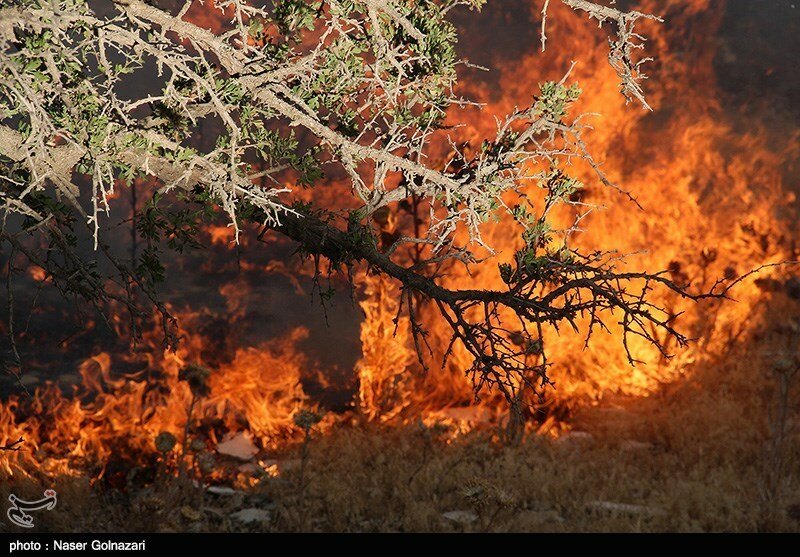Wildfire risk increases in Zagros foothills

TEHRAN – Following heavy rainfall doused the country during the past months, vegetation has covered vast areas of Zagros forest in southwestern part of the country, which easily ignites when temperature level gets higher and wildfire risk increases.
A week earlier, raging wildfire erupted in Khaeez protected area in Kohgiluyeh and Boyer-Ahmad province, southwestern Iran, which affected some 1,783 hectares of the lands.
Torrential rains over the past few months, has positive consequences like saturating the wetlands and reservoirs, however, led to some natural incidents like flooding which caused losses to the country, Mohammad Mansourpour, an official with the Iranian Space Agency said.
Based on the latest data published by National Drought Warning and Monitoring Center affiliated to Iran’s Meteorological Organization, since the current crop year (September 23, 2018), precipitation in the country increased to 296.2 from 139.2 millimeters in the previous water year, demonstrating a 112.8 percent rise. The amount also raised in comparison to the long-term average of 211.8 mm, amounting to 39.8 percent.
As the result of the rain, plants and vegetation has grown in vast areas of forests and rangelands which soon will be dried due to temperature rise and enhance the possibility of massive fires, he added.
Although, the fire has been extinguished and no longer is threatening, we assess the vegetation condition in the areas prone to wildfire through remote sensing technology every day, he said.
Satellite photos are taken twice a day due to increased risk of wildfire in Zagros outskirts, during summer we must more cautious to prevent the wildfire occurrences, he also noted.
Mansourpour went on to say that in some areas being impassable, any fire-fighting operation is almost impossible, so it is so vital to constantly observe the areas before turning into ashes, as a slight lightening can cause huge fires.
Although these places are inaccessible for the people and human-started wildfire seldom happens in these areas, the indirect involvement of humans is not negligible, he also said.
He also added that some of the farmers fire the agricultural lands after harvesting their crops, so winds blow combustibles around, which act as the heat source for nearby brush and vegetation.
According to the recent satellite imageries, southwestern Iran will experience scorching heat and definitely probability of fire expands, he lamented, adding, so we warned the responsible organizations to be alarmed during the summer.
Referring to a fire risk detection system developed for the northern forests, he stated that “the system distinguishes the fire-prone areas and helps the related bodies to act thoroughly, we tend to develop the system in the whole forests nationwide.”
Comparing wildfire risk in northern forests and southwestern ones, he said that western and southwestern parts are highly at risk because of hotter weather in the next months.
“However, northern forests will be haunted by fire usually at the end of autumn or winter,” he noted, lamenting, of course, most of the times fire reported in northern forests are human-caused.
“We are a responsible organization to monitor and supervise different parts of the country for different purposes but we can only issue warnings, so the organization assigned take measure will take responsibility to react in this regard,” he explained.
He further called on the people and farmers to be careful and prevent such happenings, and concluded that we need to protect the environment from such incidents.
Jamshid Mohabbat-Khani, head of the Department of Environment’s protection unit stated that the highest number of wildfires occurred in the capital during the past two months, as some 15 wildfires were reported in southern part of the city.
In the aforesaid period, some 218 hectares of the areas under the DOE’s protection have been swept by wildfires, he added.
FB/MQ/MG

Leave a Comment